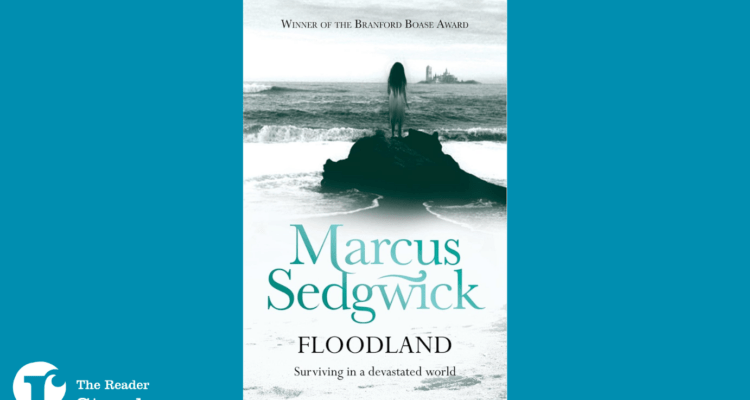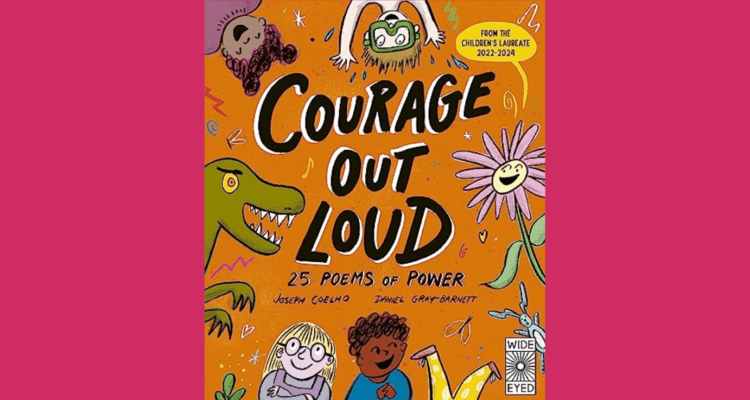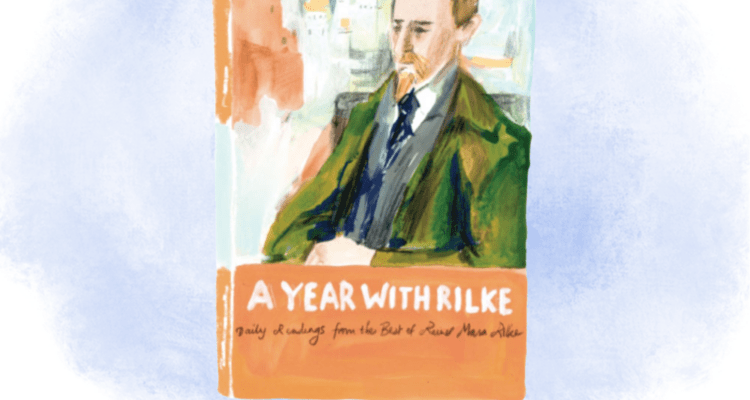From the Bookshelf: Sir Gawain and the Green Knight
As part of our ongoing work around The Reader Bookshelf, we've asked staff to share their thoughts about some of the inspirational texts in the collection.
This month, Frances shares some thoughts and words on the medieval poem Sir Gawain and the Green Knight.
 Words by Frances
Words by Frances
If you watched the 2021 adaption of Gawain and the Green Knight it might be surprising to learn that the book was included on this year’s Reader Bookshelf because of its lightness. I doubt the shadowy, foreboding atmosphere of the film made the source material – a long fourteenth-century poem written in Middle English by a person or persons unknown – particularly enticing. But if you dip into any of the many modern translations, you find a fast-moving, bizarre story of a knight’s quest, bursting with colour and incident and complete with beautiful damsels, fierce foes and fantastic feasts.
‘At that very same moment, just as the High King had finished speaking, they heard a sudden roaring of wind, the rattle of doors and windows shaking and then, outside, the clatter of a horse’s hooves on stone. The great doors burst open, and into the hall rode the most awesome stranger anyone there had ever set eyes on. For a start he was a giant of a man, taller by two heads than any knight there, but not lanky and long, not at all. No, shoulder to shoulder he was as broad as any three men stood side by side, and his legs were massive – like tree trunks, they were. And you could see the man’s arms were about as thick and strong as his legs. But that wasn’t all. This giant was green: from head to toe. Yes, bright green. I tell you, as green as beech leaves in summer when the sun shines through. And when I say the man was green, I don’t just mean his clothes. I mean him. His face. Green. His hands. Green. The hair that hung down to his shoulders. Green. Only his eyes, horror of horrors, glowed red, blood red and glaring from under his heavy eyebrows, which were as green as the rest of him. Everyone in that hall just gaped at him, at his hugeness and his greenness, and at his grimness too, for the man had a thunderous scowl on his face that struck terror into every heart.’
This is the entrance of the Green Knight, who rides into King Arthur’s halls on New Year’s Day, and demands to play a ‘Christmas game’. It is Michael Morpurgo’s version, ostensibly aimed at children, but then reading aloud is ostensibly for children too, and I defy any reader of any age not to enjoy reading the passage above. I love that the storyteller seems to be so obviously enjoying himself too.
The Green Knight’s game is simple and seemingly ridiculous – he challenges any knight brave enough to use his own massive axe to strike him once, on the condition that he can return the same blow one year later. Gawain, young nephew to King Arthur, volunteers and promptly chops the giant’s head off. But the crowd of knights and ladies then watch aghast as the decapitated Green Knight retrieves his head and rides away, telling Gawain he will see him at ‘the green chapel’ the following New Year’s Day. Gawain is honour-bound to keep his oath. His quest to find the green chapel (the green giant doesn’t leave directions) is long and hard enough, considering he believes he’s riding to his doom:
‘In a strange region he scales steep slopes;
far from his friends he cuts a lonely figure.
Where he bridges a brook or wades through a waterway
ill fortune brings him face to face with a foe
so foul or fierce he is bound to use force.
So momentous are his travels among the mountains
to tell just a tenth would be a tall order.
Here he scraps with serpents and snarling wolves,
here he tangles with wodwos causing trouble in the crags,
or with bulls and bears and the odd wild boar.
Hard on his heels through the highlands come giants.
Only diligence and faith in the face of death
will keep him from becoming a corpse or carrion.
And the wars were one thing, but winter was worse:
clouds shed their cargo of crystallized rain
which froze as it fell to the frost-glazed earth.
With nerves frozen numb he napped in his armour,
bivouacked in the blackness amongst bare rocks
where melt-water streamed from the snow-capped summits
and high overhead hung chandeliers of ice.
So in peril and pain Sir Gawain made progress,
criss-crossing the countryside until Christmas
Eve. Then
at that time of riding,
he prayed to highest heaven.
Let Mother Mary guide him
towards some house or haven.'
At the Poetry By Heart website you can watch this section of the original poem read aloud, and hear the strange sounds of the original north west dialect of Middle English that the poet Simon Armitage is doing his best to capture in the translation above. Listening to the poem spoken aloud in its original language is wonderful, a little like listening to an elf from Lord of the Rings (in fact Tolkein wrote his own translation of Gawain & The Green Knight) and sometimes oddly familiar to northerners, who may recognise slang words like ‘karp’ (talk), ‘bide’ (wait), and ‘nobut’ (nothing but).
On this Christmas Eve, Gawain does, at last, find a haven. He is welcomed to the sumptuous castle home of lord Bertilak, who reassures Gawain that the green chapel is nearby and entreats him to rest, feast and enjoy himself for a few days before he meets the giant’s axe. The lord spends the days hunting boar, deer and foxes (again, the storyteller relishes his descriptions of each chase and victim) leaving Gawain at home with Bertilak’s beautiful wife, who does her best to seduce Gawain. He resists her charms but cannot resist her offer of a green belt which she says will protect him from the Green Knight’s blow. Gawain does indeed survive his encounter with the Green Knight, but I won’t spoil the final twist in the tale.
So far, so much fun (for me at least). But why is Gawain and the Green Knight worth the time and serious attention of a Shared Reading group? Gawain himself is one good reason: a palpably human figure at the centre of this tale of magic and mystery, who is trying to find his way with sincerity and honesty and comes home believing himself a failure. The Reader’s patron, the writer Frank Cottrell-Boyce, expresses it perfectly when he says that the poem communicates ‘the beautiful anti-climax that is forgiveness.’ That forgiveness and gentleness that the Green Knight shows Gawain and the cheerful acceptance he finds when he returns to Camelot ‘with his life restored by grace’ is a strong, true feeling that shines through every version of the poem. It becomes a story of second chances, and I always have time and attention for those.
Final note – it is a good story to read to children too, especially Michael Morpurgo’s version. My mum read it over several bedtime Zoom sessions to my son (8 years old). When I asked for his verdict, he said: ‘exciting, quite strange; and I felt sorry for Gawain.’ As a taster, click here to see Frank Cottrell-Boyce retell the tale accompanied by live illustrations from former children’s laureate Chris Riddle.
You can also listen to some of our staff read aloud sections of Bernard O'Donoghue's translation here.
Share
Related Articles

The Storybarn Selects… From The Reader Bookshelf
Our last deep dive into the 2023/24 Children and Young People's Reader Bookshelf is a review of Floodland by Marcus Sedgwick…

The Storybarn Selects… From The Reader Bookshelf
We're continuing to delve into the Children and Young People's Reader Bookshelf with a review of Joseph Coelho's 25 Poems of Power…

From the Bookshelf: A Year With Rilke
Our 'From the Bookshelf' piece for January explores the collection A Year With Rilke, and was written by Lisa Spurgin.…


